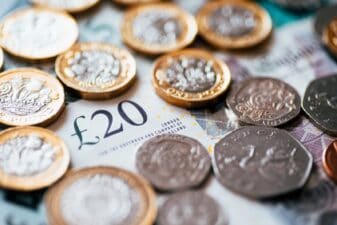The FTSE 100 (FTSEINDICES: ^FTSE) has risen by more than 85% since it hit rock bottom in 2009, and is currently trading at more than 6,600, close to the June 2007 peak of 6,732, and less than 5% below its December 1999 all-time high of 6,930.
Anyone focusing on these headline numbers could be forgiven for thinking that the FTSE has bounced back to dangerous levels over the last couple of years, but I don’t think this is true.
The FTSE is cheaper than it looks
I believe the FTSE is cheaper than it looks, for two reasons.
Passive income stocks: our picks
Do you like the idea of dividend income?
The prospect of investing in a company just once, then sitting back and watching as it potentially pays a dividend out over and over?
If you’re excited by the thought of regular passive income payments, as well as the potential for significant growth on your initial investment…
Then we think you’ll want to see this report inside Motley Fool Share Advisor — ‘5 Essential Stocks For Passive Income Seekers’.
What’s more, today we’re giving away one of these stock picks, absolutely free!
Firstly, inflation has reduced the value of a pound since 1999. In real terms, the FTSE 100 at 6,600 today is worth less, in terms of market capitalisation, than it was when it hit 6,600 in 1999.
Secondly, companies’ earnings have risen, often faster than their share prices. This means that the overall price-to-earnings ratio of the FTSE 100 may be lower than it was at previous market peaks.
Let’s look at the numbers
In my view, the simplest and most realistic way to value the FTSE 100 is to look at its PE10, which is calculated by dividing the current value of the FTSE by its average inflation-adjusted earnings over the last ten years.
On this basis, the FTSE looks quite reasonably priced:
| Trailing P/E |
PE10 | US S&P 500 avg PE10 |
|
|---|---|---|---|
| FTSE 100 | 17 | 13 | 16 |
To calculate a long-term average PE10 requires a lot of data, and this information isn’t readily available for the FTSE 100, but it is for the US equivalent, the S&P 500, so I’ve used that in the third column of my table.
If we assume that over the long run, the FTSE 100 and S&P 500 are likely to have similar valuations, then the FTSE looks quite affordable at present, with a PE10 of about 13, versus a long-term average of about 16.
Is the FTSE 100 a buy?
In my view, the FTSE 100 remains a buy.
Although it is no longer in bargain territory, it isn’t expensive either. The FTSE offers an average dividend yield of around 3.0% and analysts are forecasting average earnings growth of 10% over the next year, with a prospective yield of 3.3%.
Can you beat the FTSE?
Instead of investing in index trackers, I prefer to try and outperform the market by investing in individual stocks that I think are undervalued, and offer superior long-term income potential.
This is an approach that has served top UK fund manager Neil Woodford well: if you’d invested £10,000 into his High Income fund in 1988, it would have been worth £193,000 at the end of 2012 — a 1,830% increase!
If you’d like to know more about Mr Woodford’s stock selections, I’d strongly recommend that you take a look at this special Motley Fool report. Updated for 2013, it contains details of top UK fund manager Neil Woodford’s eight largest holdings.
This special report is completely free, but availability is limited, so click here to download your copy immediately.
> Roland does not own investments in any of the indices mentioned in this article.







